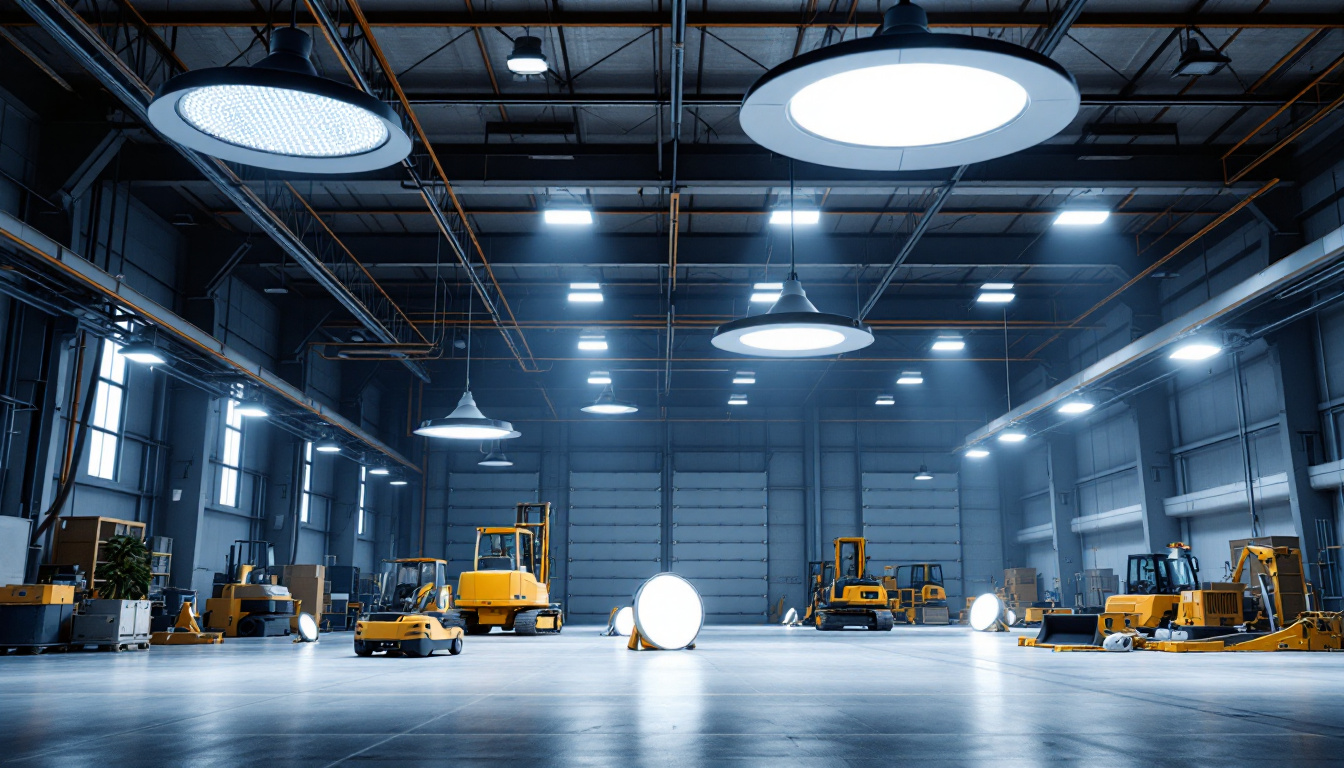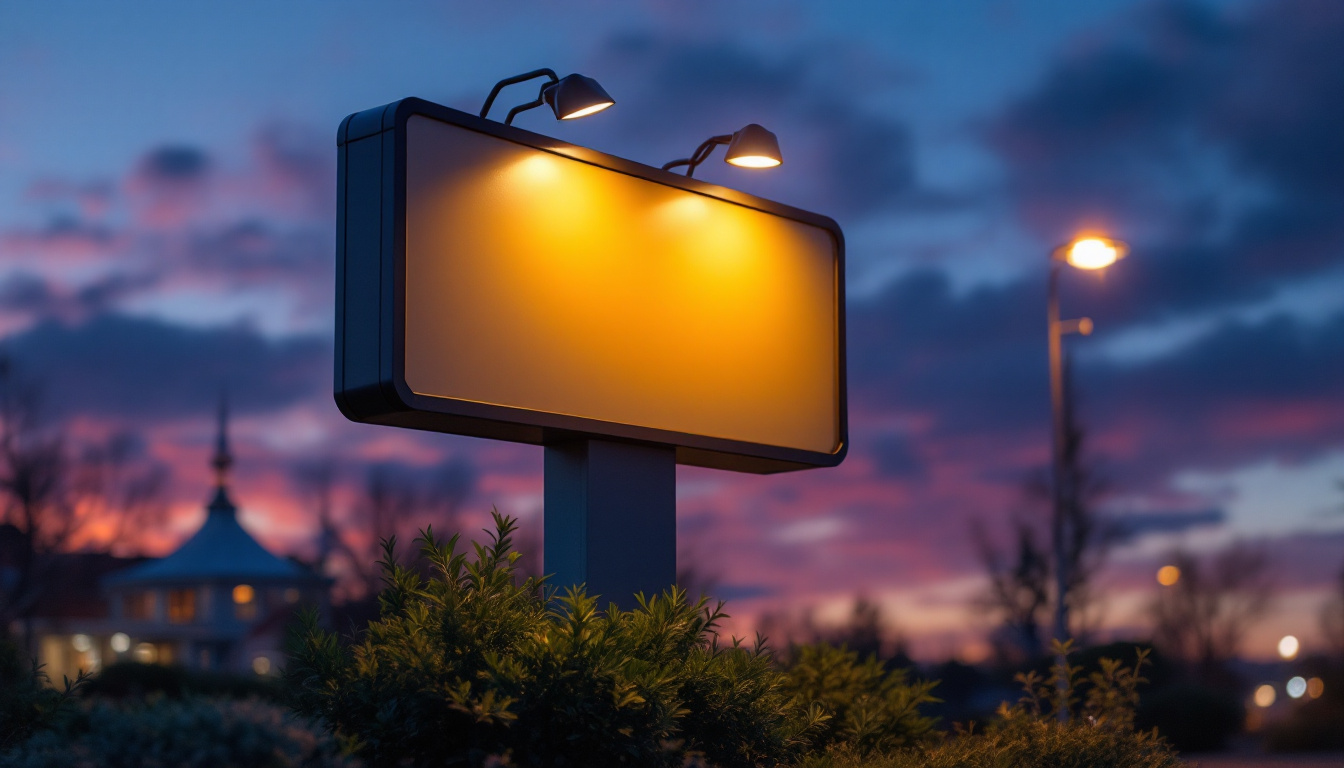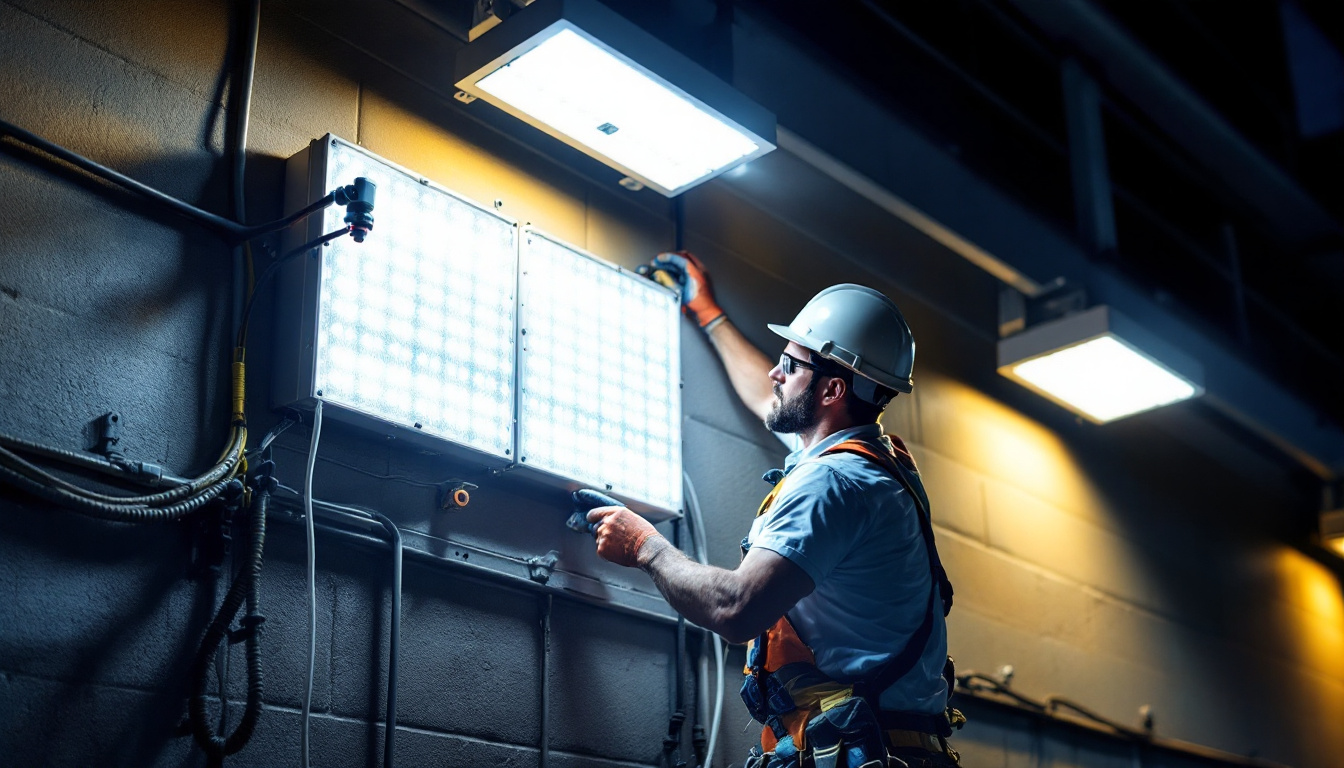

High bay lighting represents a critical component in commercial and industrial lighting design. As a lighting contractor, understanding the nuances of high bay applications can significantly impact your project success and client satisfaction. These lighting systems, typically installed in spaces with ceilings 20 feet or higher, require specialized knowledge regarding fixture selection, placement, and maintenance to deliver optimal performance.
The high bay lighting market continues to evolve rapidly with technological advancements and shifting client expectations. From traditional metal halide fixtures to modern LED solutions, contractors must stay informed about the latest developments to remain competitive and deliver value. This comprehensive guide explores the essential aspects of high bay lighting that every lighting contractor should understand.
High bay lighting serves diverse environments where ceiling heights exceed 20 feet and broad, uniform illumination is essential. These spaces typically require higher lumen output fixtures mounted at significant heights to provide adequate light levels at the working plane below. The primary goal is delivering consistent illumination across large areas while minimizing glare and shadows.
As a lighting contractor, recognizing the specific requirements of different high bay applications is fundamental to designing effective lighting solutions. Each environment presents unique challenges and considerations that influence fixture selection, mounting options, and control strategies.
Manufacturing plants and industrial facilities represent classic high bay applications where lighting directly impacts productivity, safety, and operational efficiency. These environments often feature heavy machinery, production lines, and detailed work areas requiring precise illumination. Lighting contractors must account for potential obstructions, vibration issues, and specialized task lighting needs when designing solutions for these spaces.
Industrial applications frequently involve challenging conditions including dust, moisture, temperature fluctuations, and occasional exposure to chemicals or other contaminants. Selecting fixtures with appropriate ingress protection (IP) ratings and durable construction becomes essential for ensuring long-term performance and minimizing maintenance requirements in these demanding environments.
Warehouses present unique lighting challenges with their tall racking systems, narrow aisles, and varying ceiling heights. Effective warehouse lighting must facilitate inventory management, order picking, and safe forklift operation while minimizing energy consumption across vast spaces. Vertical illuminance on shelving units is particularly important, requiring careful fixture selection and placement to ensure adequate light reaches all storage levels.
Modern warehouse operations increasingly incorporate automated systems and barcode scanning technologies that benefit from consistent, high-quality illumination. As a lighting contractor, understanding these operational requirements allows you to design systems that enhance facility functionality while delivering significant energy savings through strategic fixture placement and advanced controls.
Gymnasiums, indoor sports courts, and recreational facilities require specialized high bay lighting solutions that minimize glare, provide uniform illumination, and often meet specific light level standards for competitive play. These applications frequently involve television broadcasting considerations and the need for instant-on capability during power fluctuations or emergency situations.
Lighting contractors working in recreational facilities must also address unique challenges like impact resistance for fixtures potentially struck by sporting equipment. Designing systems with appropriate shielding and mounting options helps ensure both performance and safety in these active environments.
The evolution of lighting technology has dramatically transformed high bay lighting options available to contractors. Understanding the strengths, limitations, and appropriate applications for different technologies enables informed recommendations that align with client objectives and project requirements.
While LED technology has become dominant in recent years, contractors should maintain familiarity with traditional lighting systems they may encounter in retrofit situations. This knowledge facilitates accurate assessments of existing installations and helps quantify the benefits of potential upgrades.
LED technology has revolutionized high bay lighting by offering unprecedented energy efficiency, longevity, and control capabilities. Modern LED high bays typically deliver 100-200 lumens per watt, representing significant improvements over legacy technologies. These fixtures offer instant-on performance, excellent color rendering, and minimal lumen depreciation when properly designed.
For lighting contractors, LED high bays present compelling advantages including reduced maintenance requirements, compatibility with advanced controls, and flexible form factors that simplify installation. The directional nature of LED light emission also improves optical efficiency, allowing precise light distribution patterns that maximize useful illumination while minimizing waste.
Metal halide, high-pressure sodium, and fluorescent systems remain installed in many existing facilities. These technologies each present distinct characteristics that influence retrofit decisions. Metal halide fixtures offer good color rendering but suffer from relatively short lamp life and significant lumen depreciation. High-pressure sodium systems provide excellent efficiency but poor color quality with their characteristic amber light. Fluorescent high bays deliver better color performance than HPS but typically offer lower lumen packages than metal halide alternatives.
When evaluating existing installations, contractors should assess current light levels, distribution patterns, and control capabilities to establish baseline performance metrics. This information proves invaluable when demonstrating the potential improvements offered by modern replacement options.
Successful high bay lighting design requires balancing numerous factors including illuminance levels, uniformity, glare control, and energy efficiency. As a lighting contractor, your expertise in navigating these considerations directly impacts project outcomes and client satisfaction.
Beyond meeting basic illumination requirements, thoughtful design addresses the specific visual tasks performed in the space while creating comfortable environments that support occupant wellbeing and productivity. This holistic approach distinguishes exceptional lighting contractors from those who merely meet minimum specifications.
High bay fixtures offer various distribution patterns optimized for different mounting heights and space configurations. Narrow distributions concentrate light downward, ideal for very high ceilings or precise illumination of specific areas. Medium distributions balance downward light with some lateral spread, suitable for typical warehouse and manufacturing applications. Wide distributions maximize horizontal spread, beneficial in spaces with lower mounting heights relative to the area being illuminated.
Selecting appropriate distribution patterns requires careful analysis of the space dimensions, mounting constraints, and visual tasks. Many modern LED high bays offer interchangeable optics or reflectors that allow customization of light patterns to suit specific project requirements. This flexibility represents a significant advantage over legacy technologies with fixed distribution characteristics.
The relationship between mounting height, fixture spacing, and light distribution fundamentally shapes high bay lighting performance. As mounting heights increase, achieving uniform illumination typically requires either more powerful fixtures or reduced spacing between units. Contractors must balance these factors against budget constraints while ensuring adequate illumination throughout the space.
Photometric analysis tools have become essential for optimizing high bay layouts. These software solutions enable contractors to model different fixture arrangements and predict performance before installation begins. This capability minimizes costly adjustments during implementation and helps demonstrate expected results to clients through visual representations of the proposed lighting solution.
Advanced control systems have become increasingly important in high bay applications, offering energy savings beyond those achieved through fixture efficiency alone. Occupancy sensing proves particularly valuable in warehouses and storage areas with intermittent use patterns. Daylight harvesting can significantly reduce energy consumption in facilities with substantial skylights or clerestory windows. Task tuning allows light levels to be precisely calibrated to actual requirements rather than designing to theoretical maximums.
For lighting contractors, integrating appropriate controls represents an opportunity to deliver additional value while differentiating your services. Understanding the compatibility between fixtures and control systems is essential, particularly when retrofitting existing installations where control infrastructure may be limited.
The quality of installation directly impacts both initial performance and long-term reliability of high bay lighting systems. As a contractor, establishing rigorous installation protocols ensures consistent results while minimizing callback issues that erode profitability and client confidence.
Similarly, providing clients with comprehensive maintenance guidance helps preserve system performance throughout its operational life. This proactive approach strengthens client relationships while potentially creating ongoing service opportunities.
High bay installations present unique challenges due to working at elevation and the substantial weight of many fixtures. Safety protocols must be rigorously followed, including proper lift equipment usage and fall protection measures. Electrical connections require particular attention, as vibration and temperature fluctuations common in high bay environments can compromise inadequately secured terminations over time.
Fixture alignment and aiming become critical in applications requiring precise light distribution. Developing standardized procedures for measuring and adjusting fixtures ensures consistent results across large installations. Documentation of final positioning and settings provides valuable reference information for future maintenance or system modifications.
While LED high bays significantly reduce maintenance requirements compared to legacy technologies, they still benefit from periodic attention. Developing comprehensive maintenance schedules for clients helps preserve system performance and extend useful life. These plans typically include regular cleaning protocols to prevent dust accumulation that can impair thermal management and reduce light output.
For facilities with critical operations, contractors should consider recommending strategic spare fixture inventory to minimize downtime during replacements. Group relamping strategies remain relevant for traditional technologies, while LED installations benefit from scheduled driver replacements in applications where continuous operation is essential.
High bay lighting represents a specialized domain where lighting contractors can demonstrate significant expertise and deliver substantial value to clients. By understanding the unique requirements of different applications, staying current with evolving technologies, and implementing thoughtful design practices, contractors position themselves as trusted advisors rather than mere vendors.
The ongoing transition to LED technology continues to transform high bay lighting, creating opportunities for contractors who can effectively communicate the benefits of modern solutions. By combining technical knowledge with practical installation expertise, lighting contractors can develop a reputation for excellence in this demanding and rewarding specialty.

Discover essential insights for lighting contractors with our comprehensive guide on light switches.

Discover essential insights into outdoor sign lighting with our comprehensive guide tailored for lighting contractors.

Discover the essentials of LED wall pack retrofitting in this comprehensive guide tailored for lighting contractors.

Discover why purchasing outdoor linear light fixtures in bulk from local distributors might not be the best choice.
Get notified when NEW deals are released.
Optimize your budget with wholesale discounts.
Only top-quality, specification-grade lighting products.
No additional costs at checkout - what you see is what you pay.
We understand the unique needs of contractors.